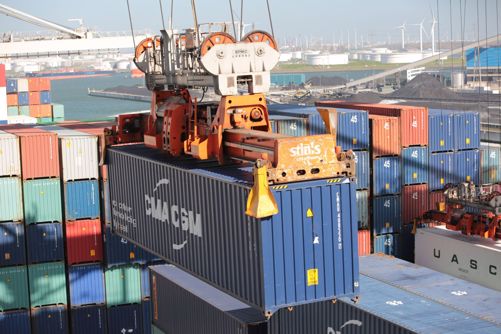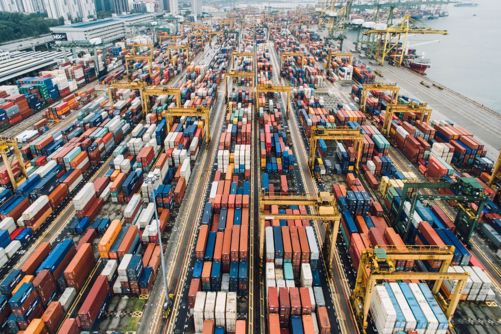Download The Origin Logistics Tech Outlook 2025 - Insights from 85+ ANZ operators
In March 1989, the Virginia Port Authority entered uncharted territory when it opened an inland port at Front Royal, Virginia. The port at Front Royal was the first inland intermodal container transport facility and ushered in a new species of Container Freight Station. Located approximately 100 kilometres from the nearest seaport, Front Royal used its proximity to numerous mainland interstates and railway lines to more productively service the movement of containerised cargo and subvert the primacy of traditional ports.
Fast forward 35 years and the role of inland (or dry) ports has taken off. Today, logistics providers use inland ports as multimodal hubs which facilitate the transfer of cargo between different modes of transportation, such as ships, trains, and trucks.
“We are in the early stages of a generational opportunity to build out port and intermodal connectivity that is more efficient, resilient and cleaner than ever before.”
- Chris Connor, CEO of American Association of Port Authorities
While supply chain breakdowns and congestion along international shipping lanes continue to grab many of the main headlines, the somewhat unnoticed prominence of dry ports is going a long way towards resolving many of the large-font issues that dominate the headlines on Page 1.
Pandemic conditions became the catalyst for a surge in global containerised logistics. As conditions have begun to recalibrate post-pandemic, the cracks that appeared in global supply chains during the scramble of 2021-22 have not yet been fully patched. This surge in global containerised logistics has derailed traditional port operations. As a result, downstream markets have become underserviced as container ships pile up waiting to dock in oversaturated ports. The bulk of these delays were underpinned by the processing times needed for the consolidation and/or deconsolidation of cargo and the lack of adequate cargo capacity at the ports themselves.
Given the overcrowded status of many seaports, many logistics providers have expanded into the hinterlands, with its cheaper real estate and greater capacity. The need to achieve improved delivery outcomes requires a more cost effective and dynamic transport option between seaports and the final destination. Inland ports provided a layer of connective tissue that was previously unavailable, as goods can typically be transferred from the original destination node to an inland hub without trucks having to wait around in highly congested traffic areas.

Often, the pre-existing infrastructure and footprint of brownfield sites can be reconfigured to meet many inland port requirements (this is particularly applicable in much of the eastern and midwestern section of the US). This repurposing of previously derelict industrial spaces is not only cost effective for logistics suppliers (oceanfront land being almost universally more expensive to develop than inland areas), but also delivers industry and commerce stickiness to regions that may sorely need it.
The velocity with which these inland hubs have inserted themselves into the wider supply chain landscape has been dramatic. The fully integrated version of these facilities is one that tiers the inward and outward flow of goods into various automated buckets, organised by an underlying technology which provides a layer of visibility that is currently missing.

These facilities serve as crucial distribution magnets, allowing shipping companies to more efficiently consolidate | deconsolidate their cargo, enabling a quicker and more cost effective way to route goods between seaports and destination markets.
“The Benefit of Inland Hubs is that it allows us to attract more exports through our gateway as well as shuttle our imports to those facilities and relieve our terminals of congestion. We continue to look for strategic opportunities to expand our inland hubs.”
- John Wolf (CEO of NW Seaport Alliance)
The inland ports of tomorrow have the potential to create an entirely new kind of Container Freight Station — a fully-fledged logistics hub reinforced by an integrated suite of automated systems and digital technologies. Automated loading bays. Electronic stacking systems. Terminal logistics software applications.
With the correct mix of technology and engineering advancements, these hubs will provide an avenue for seamless consolidation | deconsolidation services along with an added layer of container visibility that ports have historically struggled to provide.
Inland ports are only one of many implements in the toolkit for logistics providers to use for improving outcomes. The implementation of improved infrastructure and optimised, collaborative working relationships among shipping partners, augmented with the integration of new techno-centric solutions are all going to play critical roles moving forward.
On face value, the connection between these moving parts is elusive, but taken in conjunction with one another they represent a vision that is more forward looking than it has been in the past. Inland ports are indicative of this long-term transformation and point to a demarcation from the “growth-at-all-costs” mindset of the mid 20th century to the more holistic and nuanced approach supply chain providers are striving for today.
© Copyright 2025, Sandfield Associates Limited. All Rights Reserved. Privacy Policy